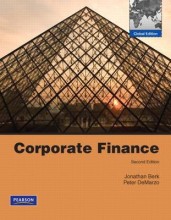Capital structure in a perfect market - Modigliani-Miller II: leverage, risk and the cost of capital
4 important questions on Capital structure in a perfect market - Modigliani-Miller II: leverage, risk and the cost of capital
With perfect capital markets, as a firm increases its leverage, how does its debt cost of capital change? Its equity cost of capital? Its weighted average cost of capital?
Which equation shows that the levered equity return equals the unlevered return, plus an additional effect due to leverage.
How do you compute the unlevered beta?
- Higher grades + faster learning
- Never study anything twice
- 100% sure, 100% understanding
How do you compute the net debt of a firm?
The question on the page originate from the summary of the following study material:
- A unique study and practice tool
- Never study anything twice again
- Get the grades you hope for
- 100% sure, 100% understanding































